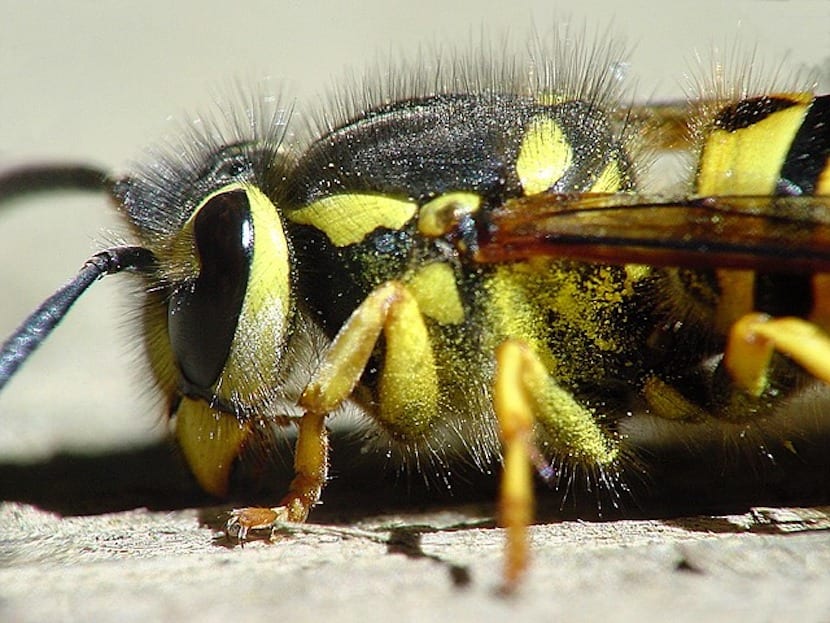
We are going to talk in this post on insect bites, specifically hymenopterans (bees, wasps and ants), and especially of allergic reactions to the venom of these animals. In summer it is common to suffer bites or discomfort caused by different insects: Mosquitoes, lice, fleas (depending on the environment in which you live) or wasps, we can also find non-insect arthropods, such as spiders; Some of them accompany us throughout the year, others, we only see them when it is hot. Insect bites cause skin reactions that bother for several days, of all of them, the most dangerous are hymenoptera.
The reaction after these bites can be very localized, but they could also be systemic (allergic) with anaphylaxis that can trigger death if not treated. They usually cause a lot of pain and erythema (inflammation of the skin), but even if the affected person does not receive treatment, the symptoms resolve well, except in the case of allergies. Some sources place the range of allergic reactions between 2,3 and 27,4 percent of the general population, but only between 0,4 and 0,8% would be systemic.
The main cause is the venom of insects, and although the most serious reactions (including death) are infrequent, the prevention of allergic reactions passes through the avoidance of the sting, but How to avoid it and at the same time lead a normal life? How to minimize the concern of families with allergic children? It may be reassuring to know that there are immunological treatments that reduce the incidence of the reaction in the body. It is the allergist who must prescribe and supervise. It is summer, the ideal season for the proliferation of insects, besides strong odors (sweat, for example) and the water attracts them ... Spanish Society of Allergology and Clinical Immunology, conducted a study, which points to an increase in the figures, in fact every year there are 2000 new consultations for this cause.

What is the hymenoptera bite like?
According to allergists, it is impossible to know whether or not you have an allergy to hymenoptero bite, until an episode of anaphylaxis has been triggered, the outlook does not seem very rosy. After the sting of a wasp or bee, the person will have itching and inflammation / swelling, and as I said, pain, it is a non-immune toxicity, however, for those who suffer from allergies, things are not so easy, since there is the risk of generalized reaction: respiratory problems, inflammation of the larynx, reddening of the skin, nausea, drop in blood pressure. This table warns of the severity of the reaction, and so that the affected / patient is not in danger, a doctor should be consulted.
Another thing is if you have suffered a previous reaction, which could condition the reaction of a subsequent sting. It is necessary to have a specialist doctor to perform the diagnosis and treatment, so I am not going to delve into the methods to be used to resolve allergic manifestations, and offer follow-up and prevention guidelines.
Types of manifestations.
The manifestations after these bites can be toxic or allergic.: the former are more frequent of moderate to moderate intensity, the affectation is very local and they will not cause respiratory symptoms (only if the insect has bitten the tongue or pharynx); the second (allergic) will be local giant and systemic (anaphylaxis), the latter are divided into four groups based on the intensity of the symptoms.

How to prevent bee and wasp stings?
We are not going to avoid going outside, and we do not know when we will come across one of these insects, but if we can stop walking through places that have stagnant waters, or with a lot of vegetation, in addition to facing the night (at sunset) the activity of the hymenoptera is greater, it is good to take this into account because this way we can use the information to our benefit. Strong odors of perfume, cologne, sweat; flashy clothes ... can attract them, and cookouts, too.
As we have said, a toxic manifestation (the most common) does not excessively compromise the health of those affected. But if a very general reaction is observed, we will be attentive to report the symptoms to the allergist. In general, the toxic reaction will be very localized (not exceeding two joints) but intense, and We just have to worry about washing well with soap and applying cold to reduce swelling.

But be very careful if the child develops hives (hives), irritates the oral mucosa or eyes, becomes dizzy or has trouble breathing!: transfer to a health center will be imminent in these cases, because it involves anaphylaxis.